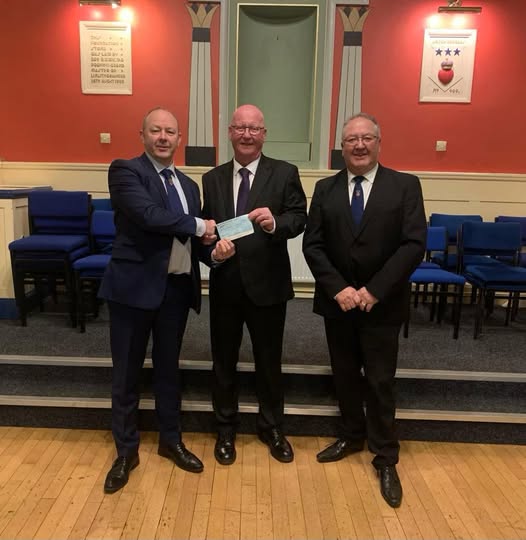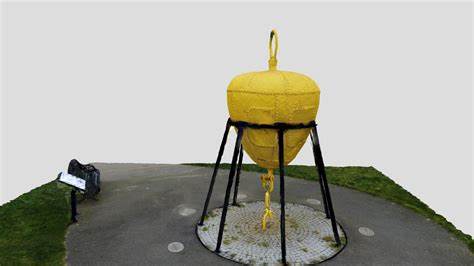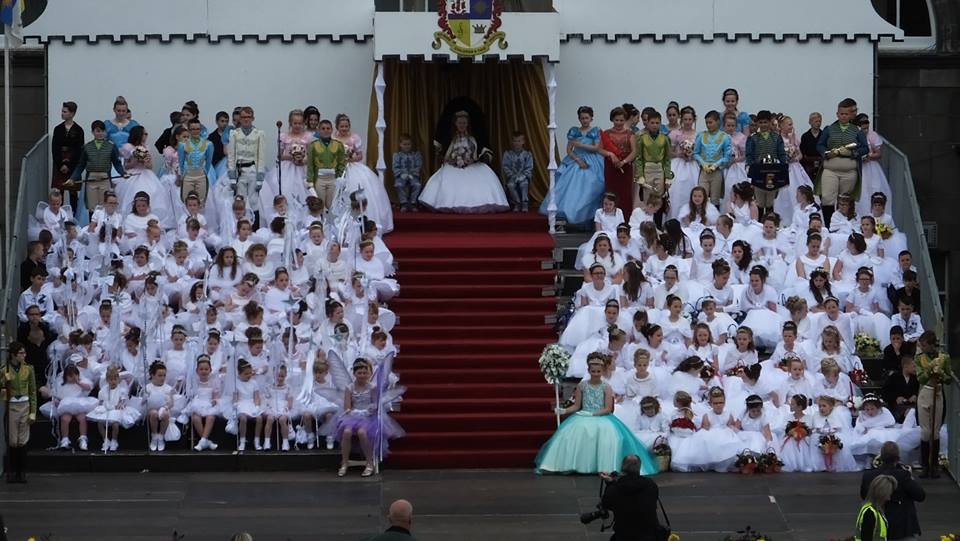As in many industrial towns, when the forming of brass bands came into vogue in the middle of the nineteenth century Bo’ness not only saw the development of one but two championship bands as ‘Bo’ness & Carriden’ and Unison Kinneil’ were instituted in the same year. Both bands were formed in the summer of 1858 and have been celebrating their 150th anniversary since June 2008. In their embryonic stage both were manned by mine, foundry and furnace workers from Grangepans in the east and Kinneil in the west. Their rivalry from their earliest meetings and stories abound that highlight its existence throughout the years and is probably one of the main reasons why both still exist and prosper in present day. They have both had years of celebrating in which they excelled and others where they were found wanting, but they have always been able to put it behind them and move on to the next contest. As Hugh Grant former Bo’ness & Carriden player explained, ” A win is on bragging rights until the next contest”.
I have been privileged over the past two years to have involved in two projects which have benefited from both Lottery funding and Falkirk council involvement and together they have allowed me to indulge in my favourite hobby of researching local history. One project culminated in the fulfilment of a personal ambition in allowing me to research and have published Bo’ness & Carriden Brass Band’s book ‘Sons o Brass’ to celebrate their 150th year. The other was instigated originally by the amazing legacy left to our town by the late Mr ‘Louis Dickson’ entrepreneur film maker and original owner of the newly refurbished ‘Hippodrome Picture House’. This was the production of a DVD to celebrate what makes ‘Bo’ness Fair Day’ “The Best Day of the Year”.
The band project involved looking at the social and industrial history of the town in order to trace the lives of some of the individuals and organisations that were instrumental in their success in its early years and ensured that they prospered into present day. We, in Bo’ness have been fortunate in growing up with such a wealth of music in the small town of ours and we take for granted that it is not the norm in every town. Until recent years the Salvation Army band graced every procession and event and we have always had various first class Pipe bands over the same time span.
Carriden were originally known as the ‘Grange Instrumental Band’. Their history with the children’s ‘Fair Day’ goes back to the original in 1897 when they marched to the head of the procession. Kinneil, in the same year led the miners at the opposite end of the town, who were intent on keeping their Trade Fair.
In 1956 not only did a fire destroy Carriden’s band hall and instruments it also consumed their history. the awards that had spanned nearly 100 years, cups and trophies, uniforms and memorabilia from a forgotten era all gone in flames. In researching the history for the book, information had to be gathered from old newspapers and cherished programmes of past contests and concerts. In order to piece together stories and events of the men and women who ensured that Carriden was the successful organisation it is, old and young were interviewed. Stories were told of years when sources of entertainment were scarce and the band was a key part in community life, when contests were keenly fought like old firm games and success brought the supporters out in celebration.
Carriden in the early years displayed their talents at local functions, trade fairs and parades and accompanied works outings during the day trips on steam ships to Leith and various other ports on the Forth. The band provided the on board musical revelries and the on shore entertainment wherever they landed. For many years they played under the conductorship of local musician John T. Bell and his son Alex who was instrumental in their early success.
The Scottish Amateur Brass Band Association was formed in the year of 1895 and Bo’ness and Carriden have the distinction of being the winners of their first contest. Some 10,000 spectators watched them win the Trophy under the expert leadership of conductor John Gladney who had worked previously with such bands as Black Dyke. Carriden was more conspicuously successful than other bands in Scotland in this era and had come from obscurity to challenge names which had been at the top of the tree for many years.
During WW1 music took a back seat to the troubles of the country and those who could sign up for the forces, did, most going into the Royal Scots. It was left to local man John Robertson to keep the young boys of the town in practice until the end of hostilities. It the general strike of 1926 the band did their bit by giving concerts in the ‘Glebe Park’ and other parts of the town to keep morale high and used their skills, busking to raise funds. Frequently they went out as quarters or as a single unit and walked as far as Edinburgh and St Andrews to play. Although the 20’s and 30’s were lean years for Britain economically, brass bands proposed. The beginning of the 30’s saw radio becoming popular in many homes. Bo’ness & Carriden could often be heard in concerts, which were broadcast from the BBC’s Edinburgh studio.
When WWII began in 1939 the men of the town were once again called upon to serve in foreign climes. The Miners and Dockers from both bands who were exempt from service forces for the first time under the mantle of the Sea Cadet Corps. They played together for the war effort until 1945 when they were once again reconstituted to their own sides of the town. On 13th March 1956 when Carriden’s band hall was destroyed by fire the men were devastated but at once set about trying to redeem their losses. A new practice hall was secured and instruments purchased, which plunged them into debt to the tune of £2600. The Bo’ness public rallied in their usual inimitable fashion and the band’s debt was almost cancelled out by the following year.
In the 1960’s they toiled to keep their heads above water financially but in the 70’s the generosity of local builder Jimmy Harrison gave them the means to build their present hall in Grangepans. They once again lifted the Scottish Cup which allowed them to participate in the British Finals in the Royal Albert Hall in London and entrance into the European Championships the following year. They were the first Scottish band to play in the initial European Championships and the band’s first lady player was introduce in this competition. Their performance merited a standing ovation and they were awarded 4th prize.
In the 90’s their skills were in transition once again. When success came, it was due to a great deal of hard work and the efforts of ‘Gus Mitchell’ a band member who gave a great deal of his time and effort to conducting the group. In 1995 Bo’ness & Carriden were successful for the fourth time in winning the championship section of the SABBA at Motherwell in the Centenary year of the contest. The official programme read Band No 1 Bo’ness & Carriden: drawn No 1 in the order of play and their luck prevailed when they were awarded the No 1 prize, Champions of Scotland.
The new Millennium has brought its challenges and due to the very generous Lottery grant from ‘Awards for All’. The band was able to commision a piece of music to celebrate their Anniversary which was a ‘March’ named ‘Sine Metu’ or ‘Without Fear’, Bo’ness town motto. At the beginning of yet another year they have invested funds in new instruments for their young band, which at present shows a healthy membership. Investing in the youth of the town has always been a major priority, as they will ensure that Bo’ness & Carriden will be celebrating their 200th Anniversary in 2058.
The subsequent project was centred round a history group formed by WEA Scotland who were working in tandem with Scottish Screen Archives and Pilton Video in the making of a DVD about Bo’ness Fair as captured in the films taken by Louis Dickson between the years of 1912 and 1960. Lottery Funding was again instrumental in allowing the restoration of these films. The group were formed to discuss the Fair and draw up a plan for the interviewing of people who have helped sculpture the Fair to what it is in present day. The Fair committee, the bands, the hairdressers, the decorated vehicles, arch builders and dressmakers, the list is endless. The schools for whom it has to be acknowledged, that there would be no Fair day if they were not fully on board and every household that contributes money or services in some small way as everything goes towards making it all so special.
These films show faces that took part in every event and helped to ensure that the community in the town were given the chance to forget about the worries of the outside world for the day and let their hair down and celebrate together. They show that down the years the standard of workmanship on arches and decorated vehicles has stayed at a high standard. It highlights that neighbours were able to work together and share the tasks just as they do in present day. These films also have allowed some small insight into the world that was our parents or grandparents by filming the procession as it travelled through the town. To see the changing names on the businesses the memories that it invokes in people who were seeing their childhood come alive before them. Reminiscences that perhaps had faded are brought back instantly in the visual pictures of their youth. To see faces that were held dear, in celebration mood that are now just a memory brings feelings that defy description. This was all down to one man’s vision.
Louis Dickson was born in Edinburgh in 1880. He trained as an electrical engineer before entering the cinematograph trade in 1899. He was a keen camera man and quickly established himself in what was an industry in an embryonic stage. IN 1908 he was appointed the official cinematographer to the Scottish National exhibition in Edinburgh. In this year of 1908 he was already visiting Bo’ness to show silent films in the drill hall in Corbiehall. Being open to new experiences he saw the merit of filming the ‘Fair Day’ and helping every one in the town to live the day again through his picture show. To see themselves on the same screen as their idols seemed to be a wonderful opportunity not to be missed. What began as a marketing exercise for the cinema eventually turned into a unique visual and social history of the town and its people through these wonderful films.
It has amazed me to witness how dedicated people can be, not only to their art like Mr Louis Dickson, but to a cause or tradition while undertaking it in the name of their town, whether it be their place of birth or ‘adopted’ home. They see it as laying foundations and ensuring a future heritage for the next generation. In the Fair song ‘The Best Day of the Year’ Douglas Snedden tells of the decimation of our industries in Bo’ness. A great deal has changed and gone over the years with the closure of the docks, the railway, the pits and the foundries and our shops are continually fighting against the odds for their livelihood.
We are never likely to have a town centre like Falkirk or Livingston but we are privileged to have the small traders who continue to do their best against the odds to serve the Bo’ness public. We have our railway museum that houses celebrities like ‘Thomas the Tank’ and we can still definitely boast that after 112 years we still have the best Fair in Scotland. The project to restore the Hippodrome has already attracted media interest in the town. We can only hope that it will help it prosper for a long time to come and the legacy that was Louis Dickson’s will not only live on in his films but those who have followed in his footsteps will continue the tradition of filming the Fair Day for the pleasure it may bring future generations.
It is, after all, simply the best!
VAL McKAY






